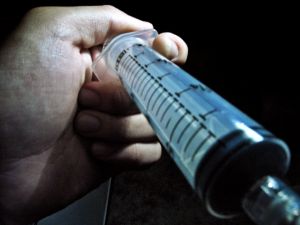Given that it’s cold and flu season, patients will no doubt be headed in droves to doctors’ offices and pharmacies in search of antibiotics – particularly a powerful one called Zithromax, also sometimes called a Z-Pak.

These prescriptions are most commonly used for bronchitis, sinus infections, pneumonia and other respiratory infections. It tends to be more popular than other similar drugs because its potency allows it to be taken for a shorter period of time.
However, our Boston personal injury lawyers have learned that the drugs are also now tied to a sudden deadly heart problem. That’s according to a recently-concluded 14-year study conducted by Vanderbilt University researchers in Tennessee.
The risk was reportedly relatively rare, but surprising, and not one that has been advertised by distributors or warned about by doctors or pharmacists.
Researchers looked at outcomes for nearly 550,000 patients who were given Zithromax between 1992 and 2006. Of those who took the five-day treatment, there were approximately 30 heart-related deaths. That was more than double the rate of what patients who had taken other antibiotics – or no antibiotics – had suffered.
So per 1 million Z-Pak patients, researchers estimated about 85 would be at risk for a sudden heart death, compared to 32 among patients who took amoxicillin and 30 among those who took no antibiotics at all. To put it another way, there would be 47 more heart-related deaths among those patients given Z-Paks versus those given amoxicillin.
Researchers said they controlled for heart risks, meaning that those in each category were no more at risk for a heart complication or problem than those in any of the other groups.
Although the risk at first glance may appear to be relatively low, consider that some 40 million people in this country are prescribed the drug annually. That means that on average, we’re talking about 3,400 deaths a year from sudden heart problems caused by this drug. That is a significant number.
Those with existing heart complications undoubtedly should be steered away from the drug, as should those with lower-than-normal levels of magnesium or potassium in their blood.
Doctors worry what the longer-term effects might be of this news, and whether there are other potential risks involving the drug that we don’t yet know about. Z-Paks, which are marketed by Pfizer Inc., have only been around for about 20 years, which means we may yet have a lot to learn. Sales last year alone for the drug topped nearly $465 million.
There has been past research that has shown that Z-Pak’s might benefit people who have severe lung disease, but in light of this new information, it’s not clear whether those individuals should continue to take it.
In response to the study, which was recently published in the New England Journal of Medicine, federal authorities with the U.S. Food and Drug Administration have issued a formal notice to doctors. Additionally, the agency announced that new labels warning of the risk would be added to the prescription bottles, so they could be easily read by patients.
Continue reading
 Boston Personal Injury Attorney Blog
Boston Personal Injury Attorney Blog











